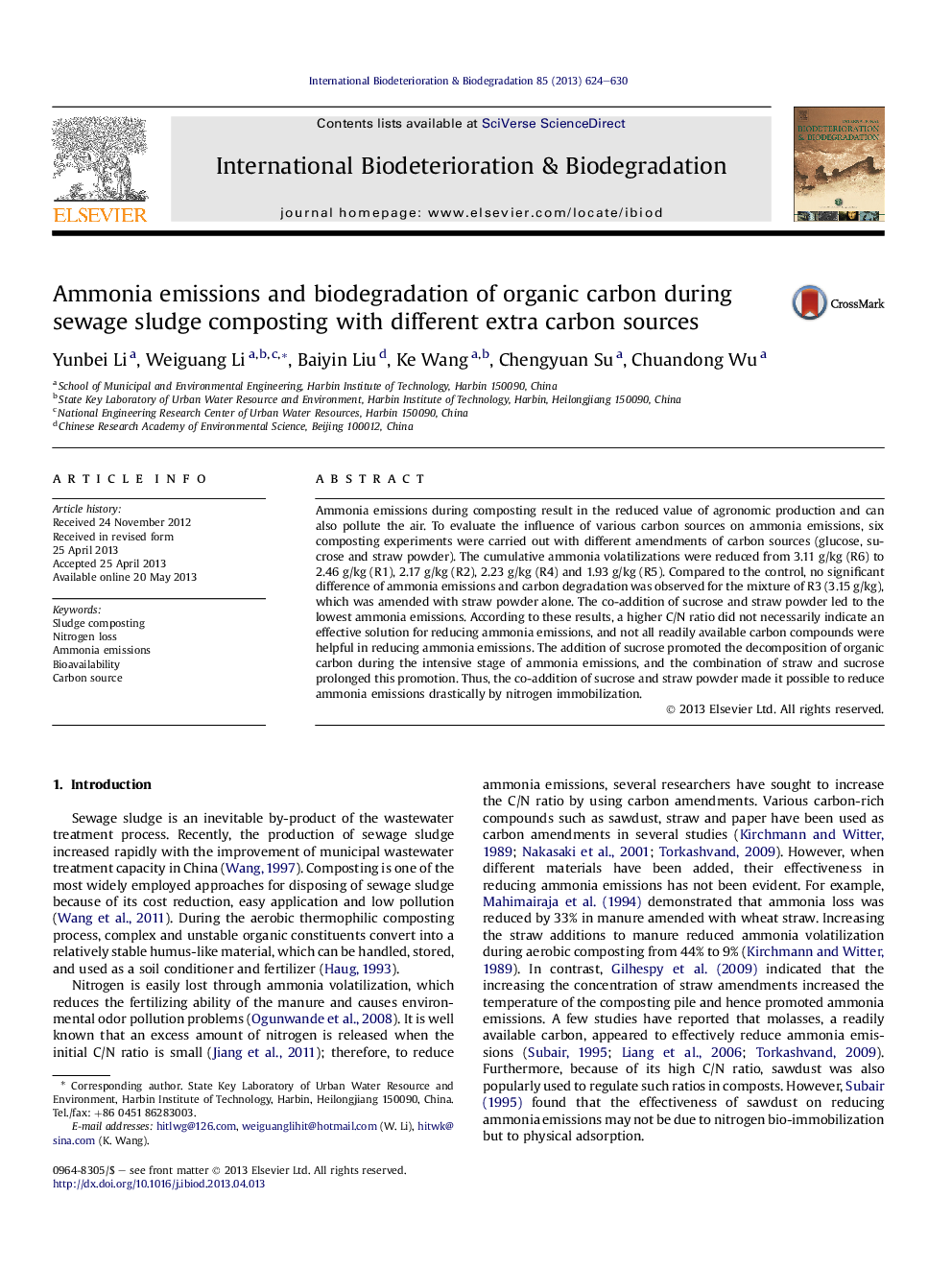| Article ID | Journal | Published Year | Pages | File Type |
|---|---|---|---|---|
| 6289384 | International Biodeterioration & Biodegradation | 2013 | 7 Pages |
Abstract
Ammonia emissions during composting result in the reduced value of agronomic production and can also pollute the air. To evaluate the influence of various carbon sources on ammonia emissions, six composting experiments were carried out with different amendments of carbon sources (glucose, sucrose and straw powder). The cumulative ammonia volatilizations were reduced from 3.11Â g/kg (R6) to 2.46Â g/kg (R1), 2.17Â g/kg (R2), 2.23Â g/kg (R4) and 1.93Â g/kg (R5). Compared to the control, no significant difference of ammonia emissions and carbon degradation was observed for the mixture of R3 (3.15Â g/kg), which was amended with straw powder alone. The co-addition of sucrose and straw powder led to the lowest ammonia emissions. According to these results, a higher C/N ratio did not necessarily indicate an effective solution for reducing ammonia emissions, and not all readily available carbon compounds were helpful in reducing ammonia emissions. The addition of sucrose promoted the decomposition of organic carbon during the intensive stage of ammonia emissions, and the combination of straw and sucrose prolonged this promotion. Thus, the co-addition of sucrose and straw powder made it possible to reduce ammonia emissions drastically by nitrogen immobilization.
Related Topics
Life Sciences
Environmental Science
Environmental Science (General)
Authors
Yunbei Li, Weiguang Li, Baiyin Liu, Ke Wang, Chengyuan Su, Chuandong Wu,
